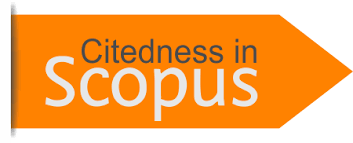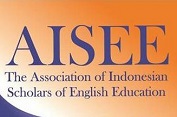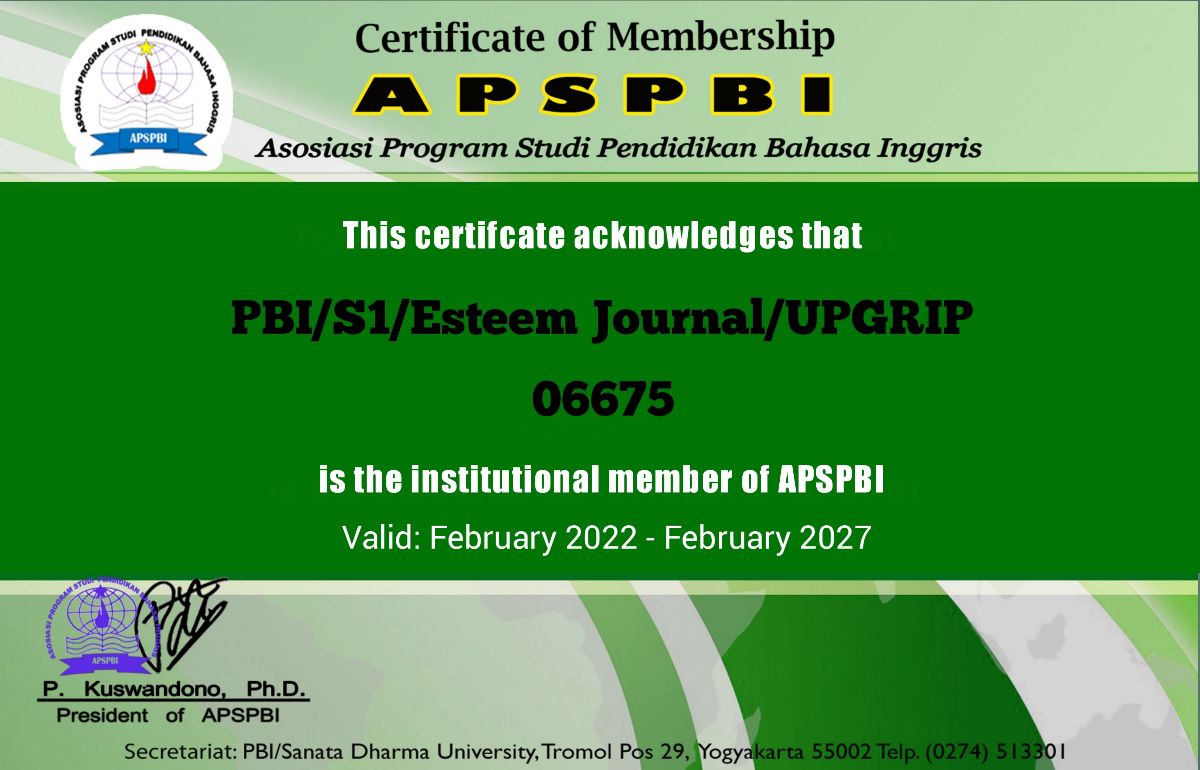THE INFLUENCE OF REINFORCEMENT AND MOTIVATION ON STUDENTS’ READING ABILITY
DOI:
https://doi.org/10.31851/esteem.v5i2.8552Keywords:
Classroom Reinforcement, Motivation, Reading AbilityAbstract
The objective of this study is to determine the influence of teachers’ classroom reinforcement on the students reading ability, determine the influence of motivation on the students’ reading ability and to determine the influence of teachers’ classroom reinforcement and motivation simultaneously on the students’ reading ability. This study was conducted on SMAN 16 OKI. The sample consisted of 30 students who were divided into two classes, each classes consisted 15 students. Samples were taken by random sampling technique. The method used in this study is Expose Facto with simple regression and multiple regression. the result of the influence coefficient between teachers’ classroom reinforcement and students’ reading ability showed that level of significant was 0.041 < 0.05. Consequently,itis a significant influence of teachers’ classroom reinforcement on the elevenths grade students reading ability. The result of the influence coefficient between student’s motivation and students’ reading ability showed that level of significant was 0.036< 0.05. Consequently there is a significant influence of teachers’ classroom motivation on the elevenths grade students’ reading ability. The result of the influence coefficient between teachers’ classroom reinforcement and motivation on the students’ reading ability showed that level of significant was 0.046 < 0.05. Consequently, there are significant influences of teachers’ classroom reinforcement and motivation on the elevenths grade students reading ability.
References
Alma, H. B. (2010). Guru Profesonal. Bandung: Alfabeta.
Arikunto, S. (2021). Pnenelitian Tindakan Kelas. Jakarta : Bumi Aksara.
B. Uno, H. (2015). Teori Motivasi & Pengukurannya. Jakarta: Bumi Aksara.
Cahayani, D. R. (2015). Pengaruh Pemberian Penguatan Verbal Terhadap Motivasi Belajar Siswa Kelas V SD Negeri Se-Gugus Krida Mandala Kecmatan Purwokerto Selatan Kabupaten Banyumas. 21.
Cahayani, D. R. (2015). Pengaruh Pemberian Penguatan Verbal Terhadap Motivasi Belajar Siswakelas V Sd Negeri Se-Gugus Krida Mandala Kecamatan Purwokerto Selatan Kabupaten Banyumas.Unnes, 6.
Djamarah, S. (2005). Guru dan anak didik dalam INteraksi Edukatif. JAkarta: PT. Asdi Mahasatya.
Fakhrian, D. H. (2015). Pengaruh Motivasi Intrinsik, Motivasi Ekstrinsik dan komitmen Organisasi Terhadap Kinerja Karyawan Pada Bank BTN kantor Cabang Malang. Jurnal Administrasi Bisnis (JAB), 3.
Hagopian, B. a. (2011). Reinforcement schedule thinning following functional communication training: Review and recommendations. Behavior Analysis in Practice,.
Hamalik, O. (2010). Psikologi Belajar & Mengajar . Bandung: Sinar Baru Algensindo.
Hamzar. (2016). Progressing students' motivation in learning English by Using hypnosis at Students' of STAN 2. Prosiding Seminar Nasional , 73.
Handoko, H. (2012). Manajemen Sumber Daya Manusia dan Personalia. Yo
Hasibuan, M. (2007). Organisasi dan Motivasi: Dasar Peningkatan Produktifitas. Jakarta: Bumi Aksara.
Jaya, A., Mortini A., (2021). Visual Scaffolding and Intensive Reading Strategies Based on Gender. Esteem Journal
Kelsey Larriba-quest, M. G. (2017, 12 18). Reinforcement in the Classroom. Retrieved from INDIANA RESOURCE CENTER FOR AUTISM: https://www.iidc.indiana.edu/irca/articles/reinforcement-in-the-classroom.
Larriba-Quest. (2017, 12 18). Retrieved from reinforcement-in-the-classroom.
Marno and Indris (2012). Manajemen Sumber Daya Manusia. Yogyakarta: Publishing House
Permana. (2008). Pengaruh Gaya Belajar dan Motivasi Belajar. Jakarta: PGMI.
Prihartanta, W. (2015). Teori-teori motivasi. Journal Adibaya, 2.
Purwanto, M. N. (1990). Psikoligi Pendidikan. Bandung: Pemaja Rosdakarya.
Sa'ud, U. S. (2010). Pengembangan Profesi Guru. Bandung: Alfabeta.
Siagian, S. (2004). Teori Motivasi (Djamarah, 2005)(Permana, 2008)dan Aplikasinya. Jakarta: Rineka Cipta.
Tang, S., Asrifan, A., Chen, Y., Haedar, & Agussalim, M. (2019). The Humor Story In Teaching Reading Comprehension. JOURNAL OF ADVANCED ENGLISH STUDIES, 77-87.
TEAM, A. (2015). Professional Development Center on Autism Spectrum Disorder, FPG Child Development Center. Retrieved from University of North Carolina: http://afirm.fpg.unc.edu/Reinforcement.
Zhao, X., Zhu, & Lei. (2012). Schema Theory and College English Reading Teaching. Canadian Center of Science and Education., 111-117.
Downloads
Published
Issue
Section
License
Copyright Notice
Authors who publish with this journal agree to the following terms:
In order to assure the highest standards for published articles, a peer review policy is applied. In pursue of the compliance with academic standards, all parties involved in the publishing process (the authors, the editors and the editorial board and the reviewers) agree to meet the responsibilities stated below in accordance to the Journal publication ethics and malpractice statement.
Duties of Authors:
- The author(s) warrant that the submitted article is an original work, which has not been previously published, and that they have obtained an agreement from any co-author(s) prior to the manuscript’s submission;
- The author(s) should not submit articles describing essentially the same research to more than one journal;
- The authors(s) make certain that the manuscript meets the terms of the Manuscript Submission Guideline regarding appropriate academic citation and that no copyright infringement occurs;
- The authors(s) should inform the editors about any conflict of interests and report any errors they subsequently, discover in their manuscript.
Duties of Editors and the Editorial Board:
- The editors, together with the editorial board, are responsible for deciding upon the publication or rejection of the submitted manuscripts based only on their originality, significance, and relevance to the domains of the journal;
- The editors evaluate the manuscripts compliance with academic criteria, the domains of the journal and the guidelines;
- The editors must at all times respect the confidentiality of any information pertaining to the submitted manuscripts;
- The editors assign the review of each manuscript to two reviewers chosen according to their domains of expertise. The editors must take into account any conflict of interest reported by the authors and the reviewers.
- The editors must ensure that the comments and recommendations of the reviewers are sent to the author(s) in due time and that the manuscripts are returned to the editors, who take the final decision to publish them or not.
Authors are permitted and encouraged to post online a pre-publication manuscript (but not the Publisher final formatted PDF version of the Work) in institutional repositories or on their Websites prior to and during the submission process, as it can lead to productive exchanges, as well as earlier and greater citation of published work (see The Effect of Open Access). Any such posting made before acceptance and publication of the Work shall be updated upon publication to include a reference to the Publisher-assigned DOI (Digital Object Identifier) and a link to the online abstract for the final published Work in the Journal.





























